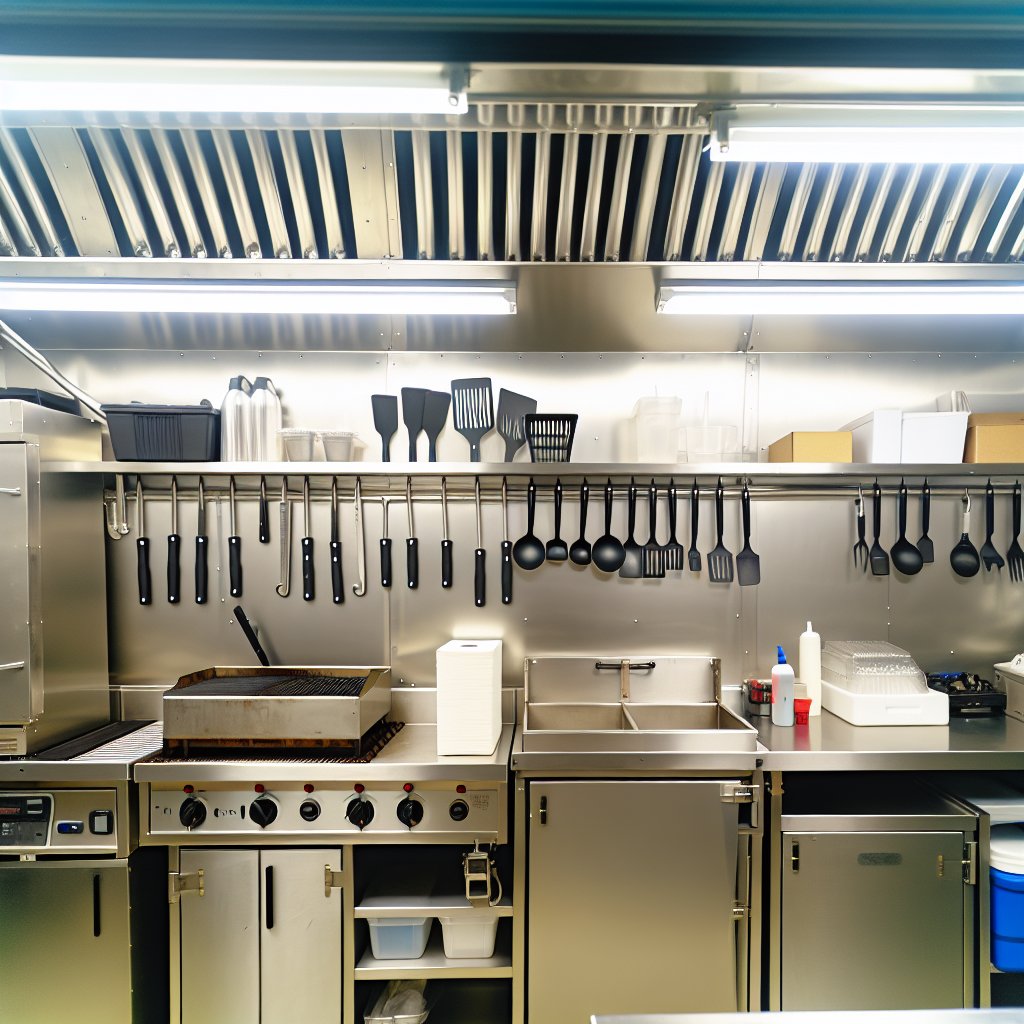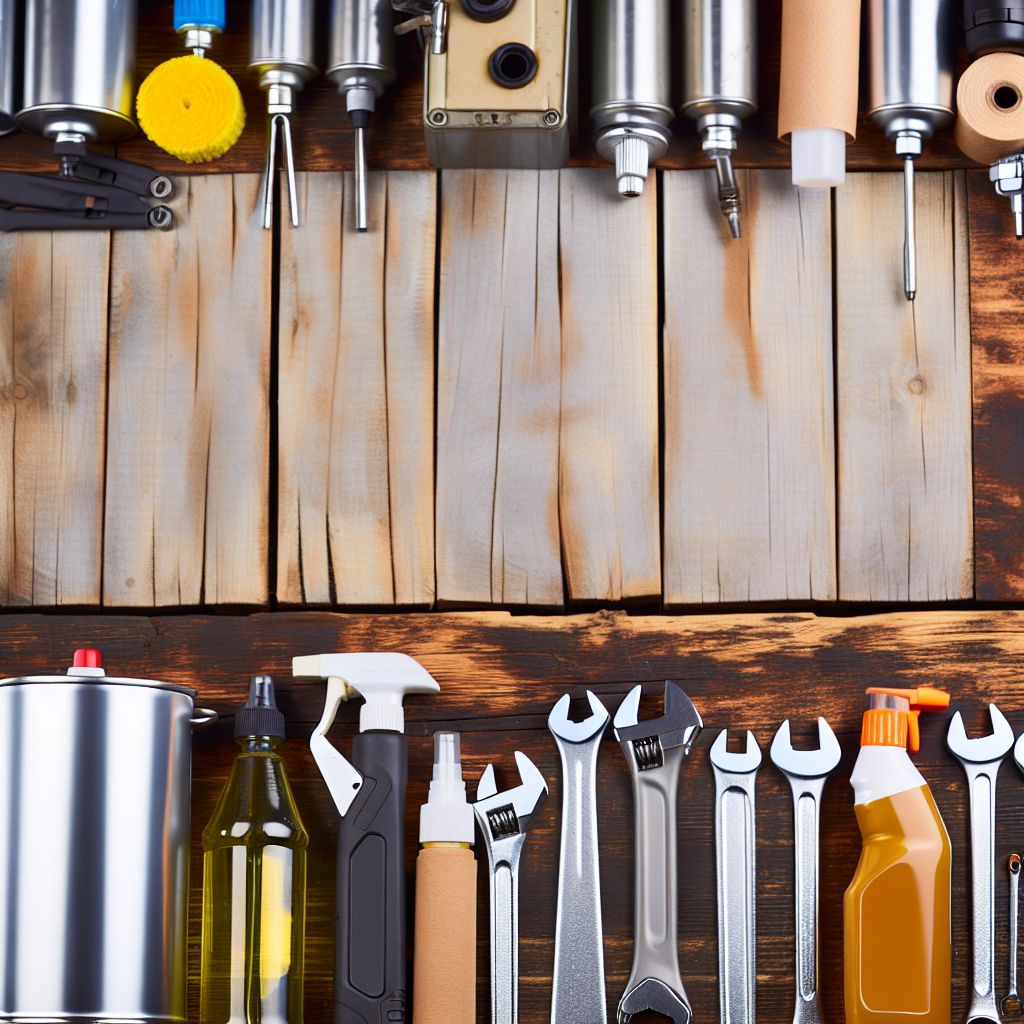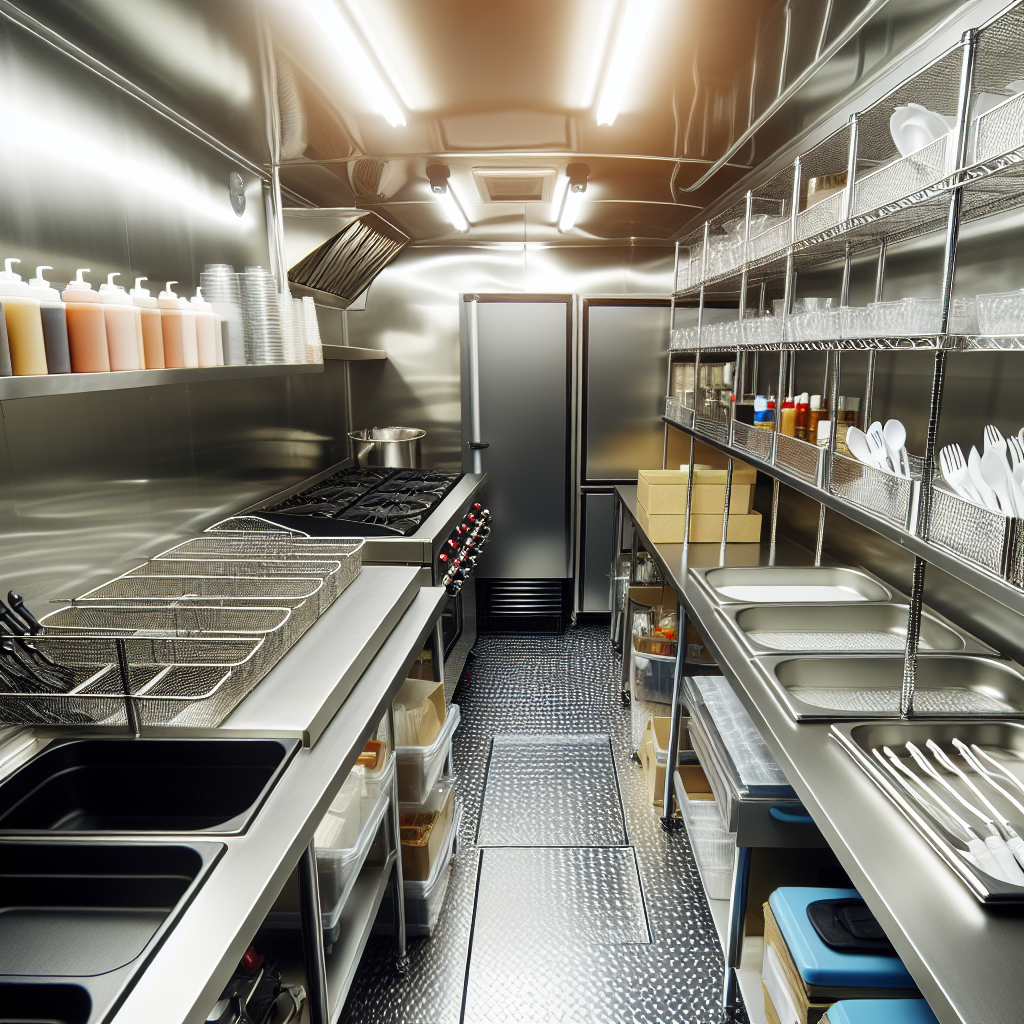Running a food truck is an exhilarating venture filled with delicious aromas, foodie adventures, and the thrill of serving eager customers. However, behind that enticing facade lies the crucial aspect of choosing the right equipment, a decision that can make or break your business. Think about it—your kitchen on wheels needs reliable tools to whip up those mouthwatering dishes, and picking subpar equipment can lead to costly breakdowns, unexpected repairs, and stressful days.
On top of that, maintaining this equipment is yet another hurdle, with challenges like keeping up with routine checks and sourcing spare parts only adding to the workload. In this article, we’ll dive into the essentials of selecting the best equipment for your food truck, share common challenges owners face in keeping their gear running smoothly, and provide practical tips to ensure your kitchen stays in top shape. Whether you’re a seasoned food truck owner or just starting out, this guide has everything you need to keep your business rolling smoothly!
| Equipment Type | Specifications | Price Range | Maintenance Requirements |
|---|---|---|---|
| Grills | Stainless steel, variable BTUs | $1,500 – $5,000 | Clean after each use, seasonal checkup |
| Fryers | Electric or gas, various capacities | $2,000 – $7,500 | Regular oil maintenance, clean filters and tanks |
| Refrigerators | Commercial grade, different sizes | $1,200 – $4,000 | Check seals, monitor temperature, defrost as needed |
| Ovens | Convection or traditional, various sizes | $3,000 – $8,000 | Regular cleaning, check heating elements |
| Sandwich Press | Flat or grill, adjustable temperature | $300 – $1,500 | Wipe down surface, check electrical cords |
| Food Prep Tables | Stainless steel, different sizes | $500 – $2,500 | Regular cleaning, check for damage |
| Deep Fryers | Floor or countertop, various sizes | $2,500 – $6,000 | Oil change routine, clean periodically |
Equipping Your Food Truck
Equipping your food truck with the right appliances and maintaining them properly is crucial for efficient operations and food safety. Here’s a clear overview of essential equipment features, simple maintenance tips, and expert insights on the importance of grills, fryers, and refrigerators.
Essential Equipment Features:
-
Grills and Griddles:
- Versatility: Great for cooking various items like burgers, sandwiches, pancakes, and vegetables.
- Adjustable Heat Controls: Helps in cooking different recipes precisely.
- Space Efficiency: Compact designs work well in the limited space of a food truck.
-
Fryers:
- Built-in Filtration Systems: Keeps oil clean, improving food quality and prolonging oil life.
- Temperature Control: Guarantees consistent cooking results and food safety.
- Compact Countertop Models: Saves space while maintaining enough capacity for popular fried foods.
-
Refrigerators and Freezers:
- Energy Efficiency: Lowers operating costs, especially important for trucks relying on generators or limited power sources.
- High-Ambient Temperature Rating: Ensures reliable operation in the hot environment of a food truck kitchen.
- Space-Saving Designs: Under-counter units or prep tables with refrigerated bases maximize storage without taking up too much room.
Maintenance Tips:
- Daily Cleaning:
- Grills and Griddles: Brush off food residue daily to prevent buildup and ensure even cooking.
- Fryers: Clean fryers daily and change oil when needed to keep food safe and tasty.
- Refrigerators: Wipe down surfaces and check temperatures to maintain safe levels.
- Regular Inspections:
- Gas and Electrical Connections: Check these weekly to find any potential issues before they cause equipment failure.
- Door Seals and Gaskets: Inspect for wear to keep proper insulation and energy efficiency.
- Preventive Maintenance:
- Professional Servicing: Schedule maintenance at least twice a year to keep equipment running well.
- Temperature Calibration: Check ovens and refrigerators regularly to ensure accurate temperatures.
Expert Opinions on Equipment Importance:
- Grills and Griddles: “Griddles and grills are perfect for making burgers, sandwiches, pancakes, and more. Models with adjustable heat controls help in precision cooking.” [source]
- Fryers: “Fryers are great for fries, chicken wings, and other deep-fried favorites. Choose units with built-in filtration systems to keep oil clean and reduce waste.” [source]
- Refrigerators: “Food safety relies on good refrigeration. Under-counter units save space and often double as work surfaces.” [source]
By choosing equipment with these features and sticking to regular maintenance schedules, you can keep your food truck running smoothly, follow health regulations, and serve high-quality food to your customers.

As food truck operators embrace these innovative technologies and equipment, it becomes increasingly important to develop effective maintenance strategies. The adoption of digital solutions, such as online ordering systems and digital point-of-sale systems, introduces a new layer of complexity that requires diligent oversight. Similarly, the incorporation of energy-efficient equipment, like solar panels, necessitates regular check-ups to ensure optimal performance and lifespan. Without a comprehensive maintenance plan, the risks of unexpected failures can lead to service interruptions and increased costs.
Understanding these adoption trends underscores the essential role of proactive management and careful maintenance planning. The food truck industry not only benefits from advancing technology but also from the commitment to uphold these investments through regular upkeep, ensuring sustained operational efficiency and compliance with health regulations. As we explore the best practices for maintaining food truck equipment, operators can apply these principles to safeguard their modernized operations and enhance overall service delivery.
Maintenance Strategies for Food Truck Equipment
To ensure that food truck equipment operates effectively and lasts as long as possible, a robust maintenance strategy is crucial. The following maintenance strategies are recommended:
-
Develop a Preventative Maintenance Schedule
Creating a preventative maintenance plan is vital for minimizing unexpected breakdowns and costly repairs. This plan should outline daily, weekly, monthly, and quarterly tasks. For instance, daily tasks might include thorough cleaning of surfaces and checking for leaks or residue on equipment. Weekly inspections can focus on components such as hoses and belts, while monthly checks may involve ensuring that generators are functioning correctly. Professional servicing should be scheduled at least twice a year to comply with health regulations and equipment warranties. [source]
-
Conduct Routine Checks
Routine checks are essential to spot potential issues early. At least once a week, perform inspections of the equipment for signs of wear, such as frayed cords or leaks. Additionally, make sure to check the inflation levels of tires regularly and inspect the generator for debris and loose connections. Continuous monitoring of exhaust fans and airflow can help maintain efficient operation. [source]
-
Implement Thorough Cleaning Practices
A consistent cleaning regime is necessary for health and safety. Daily cleaning operations should include sanitizing prep surfaces and checking ovens and grills for any debris. Weekly deep cleaning tasks could involve cleaning fryers, vents, cook tops, and thoroughly sanitizing water lines. This practice not only ensures hygiene but also enables identification of any potential wear and tear before they escalate into larger issues. [source]
-
Monitor and Replace Parts as Needed
Monitoring critical components for wear is vital. Regular checks on items like belts, hoses, and seals can provide early warnings of needed repairs. Keeping track of equipment performance, including cooking temperatures, will allow you to observe any abnormalities in operation. Following the manufacturer’s recommendations for replacement and repairs ensures that equipment operates safely and efficiently. [source]
-
Train Staff on Maintenance Practices
Proper training for staff on maintenance and cleaning procedures cannot be overstated. Well-trained employees will handle equipment responsibly and follow cleaning practices diligently, maximizing the longevity of your food truck equipment. Consider assigning responsibilities during shifts to ensure that cleaning and routine checks occur consistently. [source]
By adopting these maintenance strategies, food truck operators can significantly enhance equipment longevity, ensuring smooth operations and compliance with food safety regulations. Implementing such practices fosters a safe and efficient working environment, ultimately benefiting both the staff and customers.

In conclusion, selecting the right equipment for your food truck is not merely a logistical decision but a vital step towards ensuring your business’s success. The equipment you choose directly influences the quality of your food, the efficiency of your operations, and ultimately, your customer satisfaction. Investing in reliable appliances and maintaining them diligently can prevent costly downtime and enhance your service, allowing you to focus on what you do best—creating delicious meals and delightful experiences for your patrons.
As you embark on this exciting journey, take the time to evaluate your equipment options thoroughly. Consider their specifications, maintenance needs, and how they align with your menu offerings. An informed decision will pave the way for smoother operations and sustainable growth in the competitive food truck landscape. Remember, regular maintenance is just as essential as the initial purchase—it ensures longevity and reliability, which are key to cultivating a successful food truck business. By prioritizing both the right equipment and its upkeep, you set yourself up for a thriving culinary venture that can weather any challenge in this dynamic industry.
Food Truck Operators’ Equipment Preferences
Food truck operators express diverse preferences concerning their equipment, with a strong emphasis on efficiency, reliability, and cost-effectiveness. Here’s a summary of the key testimonials about popular equipment choices:
Popular Equipment Selected by Food Truck Owners
-
Blackstone 36″ Griddle Station
Valued for exceptional heat distribution and sturdy construction, this model excels in high-volume cooking, proving to be a favorite among many food truck owners.
-
Frymaster MJ45 Deep Fryer
Known for its rapid recovery time and reliable temperature management, the Frymaster MJ45 is particularly popular for cooking menu items like French fries, offering consistent results to keep up with demand.
-
True T-49 Refrigerator
Esteemed for its consistent temperature performance and energy efficiency, the True T-49 is essential for maintaining food freshness and safety in the typically limited space of food trucks.
User Experience and Satisfaction
Testimonials from food truck owners highlight their satisfaction with these equipment choices, pointing out not only their functional effectiveness but also their role in enhancing customer engagement. Many operators also emphasize the significance of tailored, custom designs and layouts that align with their brand and operational style, helping them connect better with customers.
Importance of Quality Service
Operators appreciate manufacturers that exhibit a commitment to quality and exemplary service, as this partnership often leads to substantial operational success. This highlights how crucial the relationship with equipment suppliers is for running a thriving food truck business.
Overall, testimonials from food truck operators point to a clear trend: equipment choices significantly influence day-to-day operations, efficiency, and ultimately, customer satisfaction.
Best Practices for Food Truck Operations Regarding Equipment Usage and Maintenance
-
Regular Maintenance Checks
- Schedule routine maintenance checks for all equipment to ensure optimal functionality and prevent breakdowns.
-
Daily Cleaning
- Implement a daily cleaning schedule to keep all cooking surfaces and appliances sanitary and in good working order.
-
Temperature Monitoring
- Regularly monitor temperatures of refrigerators, freezers, and cooking equipment to ensure food safety and quality.
-
Training Staff
- Ensure that all staff members are trained on proper equipment use and maintenance to promote safe practices and efficiency.
-
Use Quality Parts
- When replacing equipment components, opt for high-quality parts to improve reliability and extend the lifespan of your appliances.
-
Follow Manufacturer Guidelines
- Adhere to the manufacturer’s recommendations for maintenance and usage to avoid warranty voids and safety issues.
-
Keep Spare Parts
- Maintain an inventory of essential spare parts to quickly address any repairs needed to minimize downtime.
-
Document Maintenance Activities
- Keep records of all maintenance activities and issues encountered to help in troubleshooting and future management decisions.
Tips for Optimizing Your Food Blog for SEO
To enhance the visibility of your food-related blog, integrating strategic keywords in your SEO efforts is critical. Adding keywords such as food truck regulations and kitchen safety tips can significantly improve search optimization strategies. Below are tips on optimizing your blog for search engines:
-
Target Long-Tail Keywords: Focus on specific, less competitive phrases like “food truck regulations” and “kitchen safety tips” to attract a niche audience.
[source] -
Optimize Blog Post Titles: Craft engaging titles incorporating relevant keywords naturally, avoiding keyword stuffing.
[source] -
Implement Schema Markup: Use structured data to enhance search result listings with rich snippets, improving click-through rates.
[source] -
Enhance User Experience: Ensure your blog is mobile-friendly and loads quickly to keep visitors engaged.
[source] -
Build Quality Backlinks: Earn links from reputable sources to boost your blog’s authority and search rankings.
[source]
By focusing on these aspects, you can improve your blog’s visibility and attract an audience interested in food truck regulations and kitchen safety tips.
